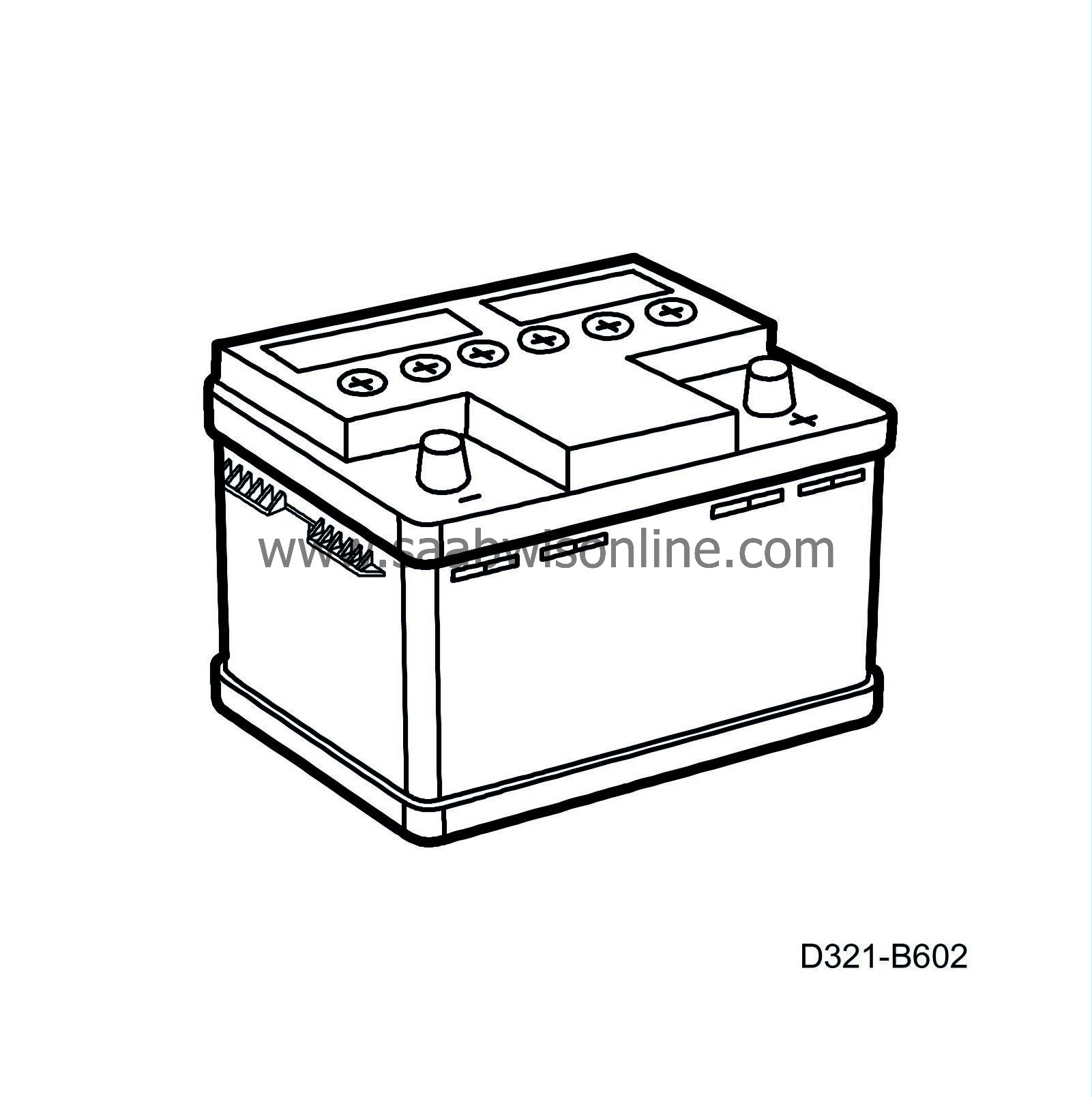(311-1773) Long-term storage of hybrid batteries
| TECHNICAL SERVICE BULLETIN | |
| Bulletin Nbr: | 311-1773 |
| Date: ........... | AUGUSTI 1997 |
| Market: | ALL |
| Long-term storage of hybrid batteries |
| Cars affected |
Saab M1997- with hybrid battery.
| Background |
This SI replaces SI 311-1351 as well as the sections concerning batteries in SI 100-1482 and Service Manual 1 Service.
A new type of battery was introduced during the production of the year model 1997, a so-called hybrid battery. The biggest advantage of the hybrid battery is that the consumption of water has been reduced by up to six times, which means that the battery will normally not need to be topped up in between services.
However, it is necessary for both standard and hybrid batteries to be trickle charged during long-term storage so that they are not destroyed by undervoltage (deep discharge).
This SI describes the difference between standard and hybrid batteries and instructions for their maintenance.
| Differences between standard and hybrid batteries |
Standard battery (Antimony battery)
|
Positive and negative electrodes
|
Lead/Antimony alloy.
|
|
Cover
|
Screw plugs with ventilation holes formed as a labyrinth in the plugs.
|
|
Advantages
|
Withstands deep discharging (under 12 V without load) relatively well.
|
|
Disadvantages
|
High water consumption.
Small fluid reserve above the plates (5-10 mm). Storage time 6-8 months for disconnected battery. |
Hybrid battery
|
Positive electrode
|
Lead/Antimony alloy.
|
|||||||||
|
Negative electrode
|
Lead/Calcium alloy.
|
|||||||||
|
Cover
|
Airtight screw plugs with side-ventilation via a ceramic filter. The filter has three main functions:
|
|||||||||
|
Advantages
|
Lower water consumption (six times lower than a standard battery).
Storage time approx. 12 months for disconnected battery. Larger fluid reserve above the plates (25-30 mm). Battery acid does not escape together with charge gases. The battery can be leant over without spilling battery acid. |
|||||||||
|
Disadvantages
|
Not available dry-charged for after-sales.
Ages somewhat faster than an antimony battery when deeply discharged. |
|||||||||
| Procedure |

Trickle charging
All batteries, irrespective of type, will become discharged sooner or later and must be checked and charged at regular intervals if they are not to become unserviceable. A deeply discharged battery (under 12 V for more than 12 hours) that is recharged does work to begin with but it will never regain full capacity and will soon cease to function.The time it takes to discharge depends on the current consumption. The diagram shows that the battery voltage drops more slowly if the transport fuses are removed. The spread is due to car variant and battery size.
......... With transport fuses removed
_____ With transport fuses connected
_._._._ Lower limit for charging
Checking battery voltage
During final inspection at the factory, the battery is always checked to make sure its voltage exceeds 12.4 V. When a new car arrives at the import docks, importer’s or dealer’s, the battery’s condition must be checked by measuring its voltage and fluid level. If necessary, the battery must be topped up and recharged (see table below).Check the battery condition every 40 days after that, until the car is sold. Top up the battery and recharge it as necessary.
When the transport fuses are removed, the battery needs to be recharged only every 90 days. Top up the battery and recharge it as necessary.
Method of checking
When the battery is being charged, from the alternator while the engine is running or from a charger, it receives a slightly higher voltage level, see diagram below. When the charging current is cut off, the voltage level remains but drops slowly to normal level, which is reached after approx. 24 hours. It is this voltage level that indicates the condition of the battery (and is the one that preferably should be measured).
The diagram shows a typical voltage curve as a function of the time after charging. The values vary with the condition of the battery.
| Note | ||
|
Therefore, the battery voltage must be measured 6 hours after being charged with the alternator (i.e. the car has been running) or with a battery charger at the earliest. |

Depending on the voltage reading the following steps must be taken:
|
Voltage reading
|
Procedure
|
|
Above 12.4 V
|
OK
|
|
Between 12.0 V and 12.4 V
|
Charge
|
|
Below 12.0 V
|
Replace
|
Charging batteries
Use a battery charger that delivers a charge current of approx. 4-8 A. Battery terminals and cover do not have to be removed.Charge time 4-12 hours depending on the condition of the battery and the charge current. Follow the instructions for the battery charger.
| Important | ||
|
A so-called quick-charger must not be used. |
||



